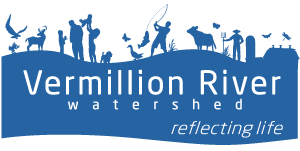Stream obstruction removal guidelines
When landowners walk around their streambank properties, they may sometimes find a few surprise items obstructing the flow. Stream obstructions occur routinely in nature and can be beneficial. Stream obstructions can also affect public infrastructure, individual properties, fish, wildlife, crops, livestock, and recreation. Each stream obstruction is unique and should be evaluated independently.
The Vermillion River Watershed Joint Powers Organization (VRWJPO), in consultation with its Technical Advisory Group (TAG), has prepared guidelines to assist landowners and public officials to know when a stream obstruction should be removed. “FAQ: Stream Obstructions” provides general advice about how to evaluate a stream obstruction, when a Minnesota Department of Natural Resources Public Waters Work Permit is needed, what best management practices are recommended to prevent or remove obstructions, and who to consult on the occasional beaver-versus-landowner conflict. The FAQ includes references from other states, the U.S. Army Corps of Engineers, and the American Fisheries Society.


